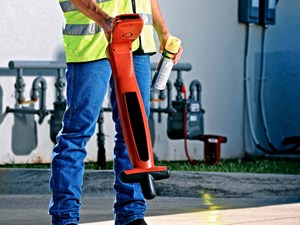American Society of Civil Engineers publishes updated utility standards
(UC) — The American Society of Civil Engineer (ASCE) on Wednesday released updated utility standards aimed at reducing redesign, unnecessary utility relocations, and differing site conditions and associated costs.
Standard Guideline for Investigating and Documenting Existing Utilities, ASCE/UESI/CI 38-22 and its companion standard, Standard Guideline for Recording and Exchanging Utility Infrastructure Data, ASCE/UESI/CI 75-22, designed to minimize risk, increase public safety and decrease costs, are now available in e-book form.
“Utilities have long been a source of uncertainty during project development,” Tom Smith, ASCE executive director, said. “These two standards put control of significant constructability risks back into the hands of the design team.”
Previously titled Standard Guidelines for the Collection and Depiction of Existing Subsurface Utility Data ASCE 38-02, the updated ASCE 38-22 has been re-issued and renamed from its previous edition to more succinctly convey its purpose. This standard guides engineers in performing utility investigations during project development work to help them design projects that have minimal impact to existing utilities: protecting engineers, project owners, utility owners and the public from utility related claims. This updated standard contains significant commentary and examples, new and revised definitions, and new provisions learned from the experiences of its last 20 years of use.
Standard Guideline for Recording and Exchanging Utility Infrastructure Data, ASCE 75-22, is the result of recurring discussion among various agencies going back 30 years, for the creation of a utility “As-Constructed” or “As-Built” standard, to ensure that new utilities added to a project, or relocated during a project, have accurate and useable records of their location and attributes going forward.
This standard addresses utility security concerns, and the needs of engineers, utility owners, and rights of way owners to know in the future what is under and above the ground. Although produced as a project standard, 75-22 can also be used as a utility records development standard for utility owners.
“There are a lot of utilities in the ground — active, not in service, and abandoned ones,” said James H. Anspach, Dist.M.ASCE, Chair, ASCE 38. “Record drawings are not always available or of sufficient detail for design purposes. Project coordination is further hampered by utility owners rarely being parties to the project contract. These two standards should be an integral part of any design manager’s toolbox.”
The release of these two standards and use during projects of all kinds will increase public safety and decrease schedules and unforeseen costs due to existing and new utilities within project limits.
The print copy of these standards will be available July 25.
Related News
From Archive

- Glenfarne Alaska LNG targets late-2026 construction start for 807-mile pipeline project
- U.S. water reuse boom to fuel $47 billion in infrastructure spending through 2035
- $2.3 billion approved to construct 236-mile Texas-to-Gulf gas pipeline
- Major water pipe break in Puerto Rico hits over 165,000 customers
- Potomac River Tunnel project enters construction phase beneath Washington, D.C.
- Pennsylvania American Water launches interactive map to identify, replace lead water service lines
- Trump's tariffs drive $33 million cost increase for Cincinnati sewer project
- Utah city launches historic $70 million tunnel project using box jacking under active rail line
- Tulsa residents warned after sewer lines damaged by boring work
- Fatal trench collapse halts sewer construction in Massachusetts; two workers hospitalized




Comments